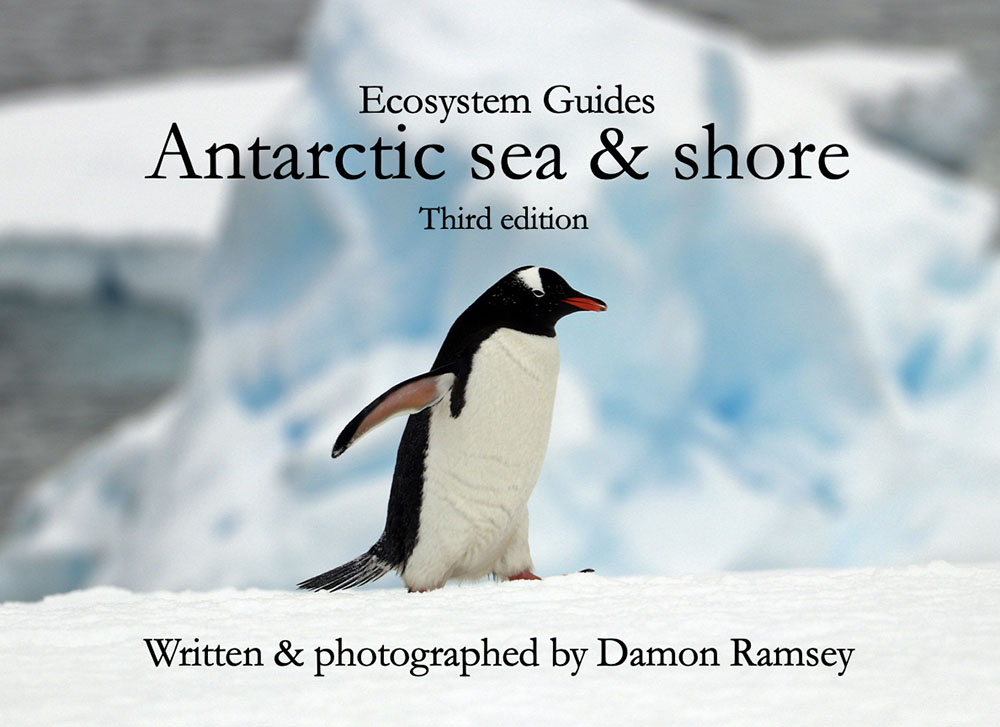ecosystem-guides.com
....exploring the planet's ecosystems
SUBANTARCTIC
Tundra
Tundra are the generally treeless plains found in the cold and dry areas in the seasonally ice free areas of the sub-polar regions. When most people think of tundra, they think of the northern hemisphere Arctic Tundra; this is due to the larger amount of land in the polar and sub-polar regions in the northern hemisphere (compared to the southern), and results in the biome being much more common, as well as more accessible. However, there are small but important areas of tundra in the southern hemisphere, such as the New Zealand & Australian subantarctic islands, and the Falklands and South Georgia island groups off South America.
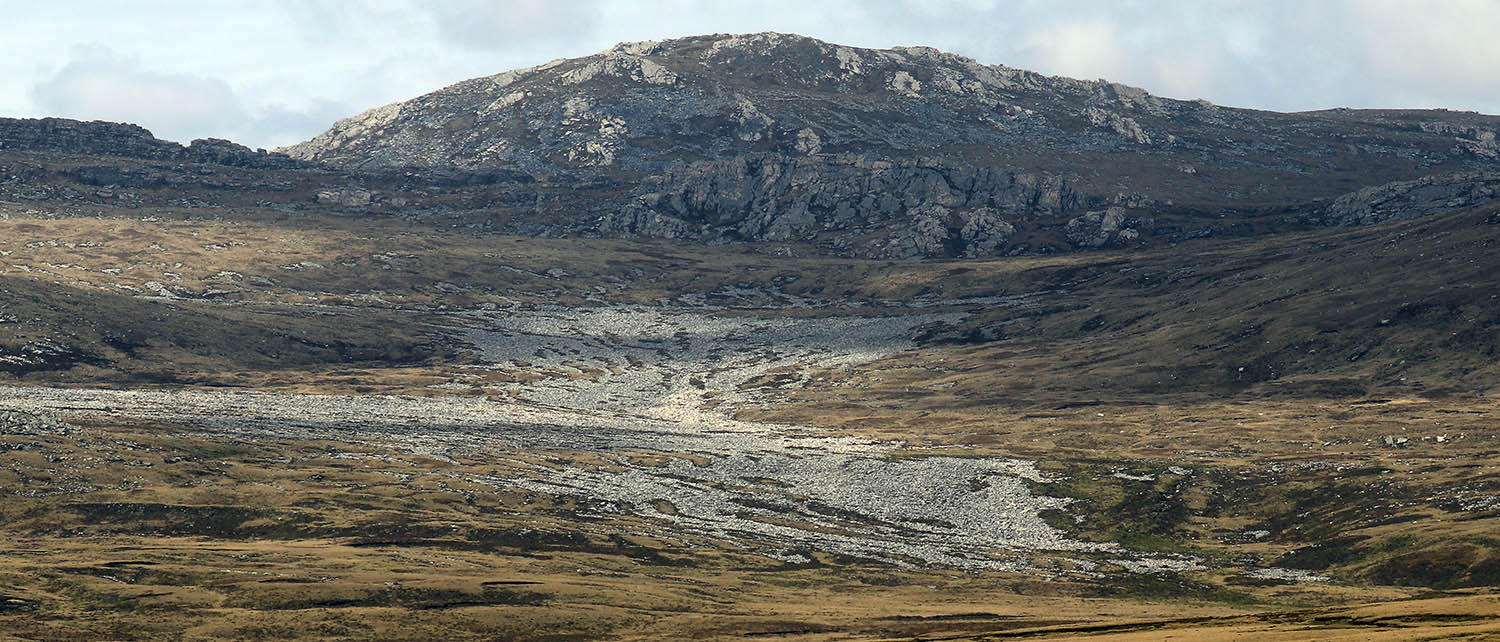 (Falklands)
(Falklands)The tundra of the subantarctic islands on the South American side includes widespread plants that are also found in the open grasslands of Patagonia.
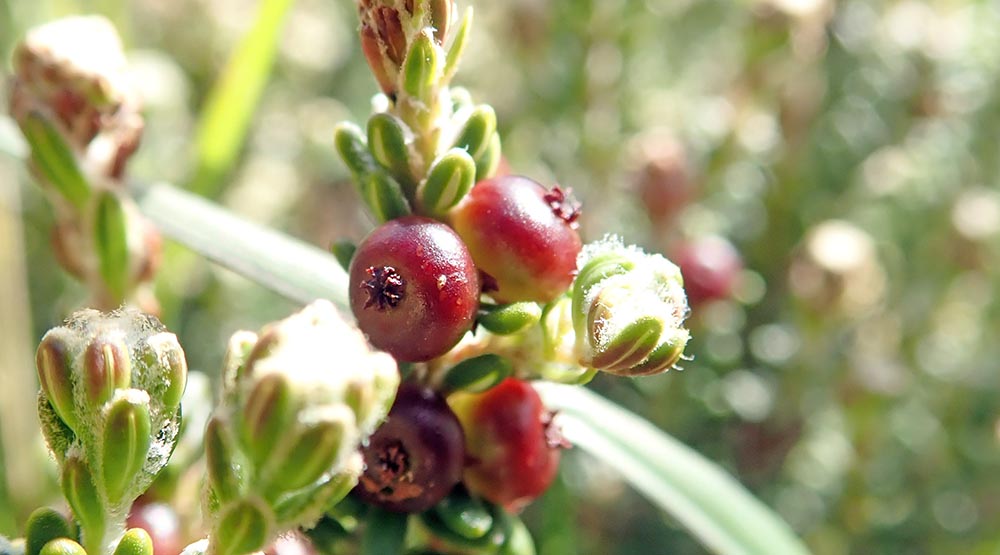 Empetrum rubrum, 'Diddle-dee', (Falkland Islands/Malvinas)
Empetrum rubrum, 'Diddle-dee', (Falkland Islands/Malvinas)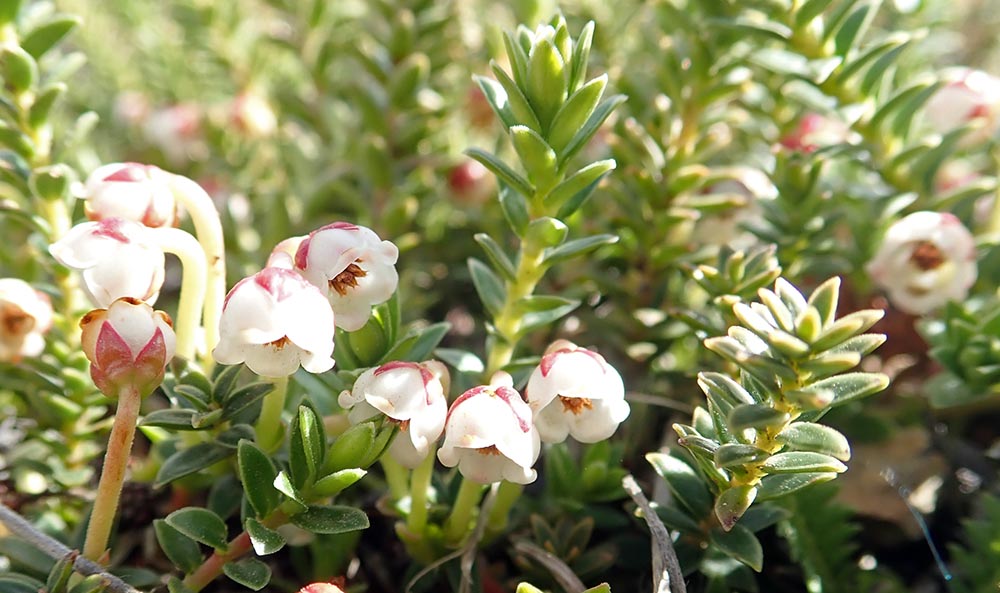 Gaultheria pumila, 'Mountain-Berry', (Falkland Islands/Malvinas)
Gaultheria pumila, 'Mountain-Berry', (Falkland Islands/Malvinas)The tundra of the subantarctics on the Australasian side include a small variety of fascinating endemic plants, including the 'megaherbs'.
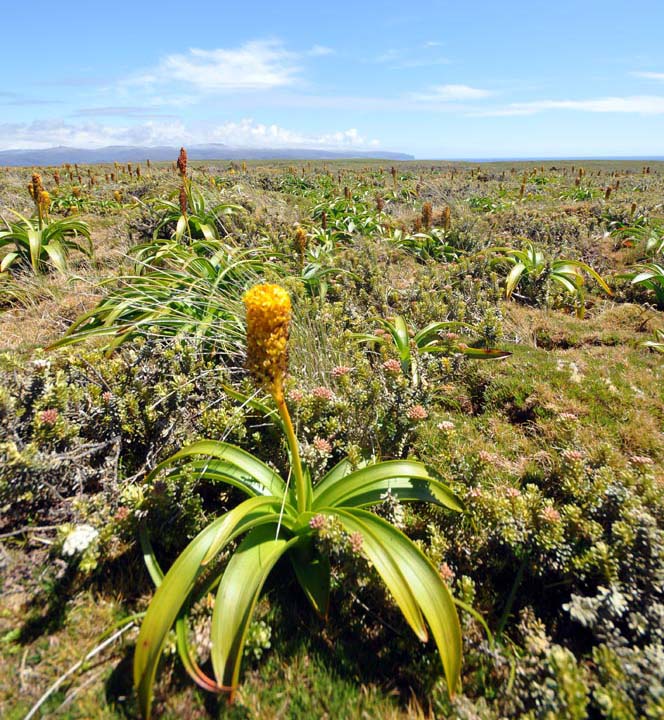 Bulbinella rossii, (Auckland Islands, New Zealand)
Bulbinella rossii, (Auckland Islands, New Zealand)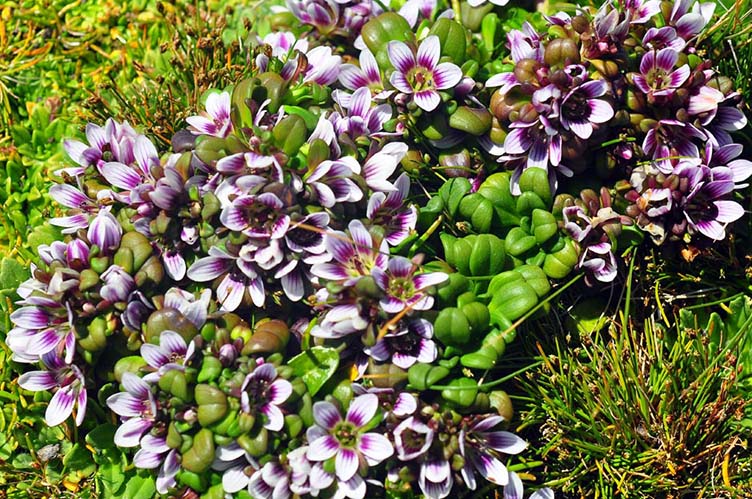 Gentianella concinna, (Auckland Islands)
Gentianella concinna, (Auckland Islands)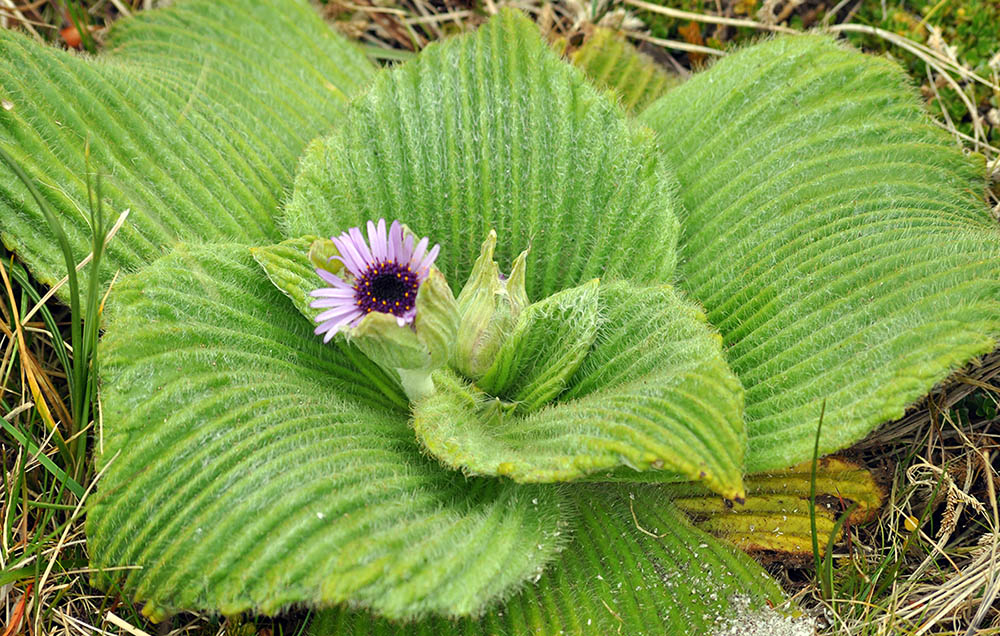 Pleurophyllum speciosum, 'Campbell Island Daisy', 'Giant Emperor Daisy'. One of the famous 'megaherbs' of the New Zealand subAntarctic islands. Endemic to Campbell and Auckland Islands. (Campbell Island, New Zealand)
Pleurophyllum speciosum, 'Campbell Island Daisy', 'Giant Emperor Daisy'. One of the famous 'megaherbs' of the New Zealand subAntarctic islands. Endemic to Campbell and Auckland Islands. (Campbell Island, New Zealand)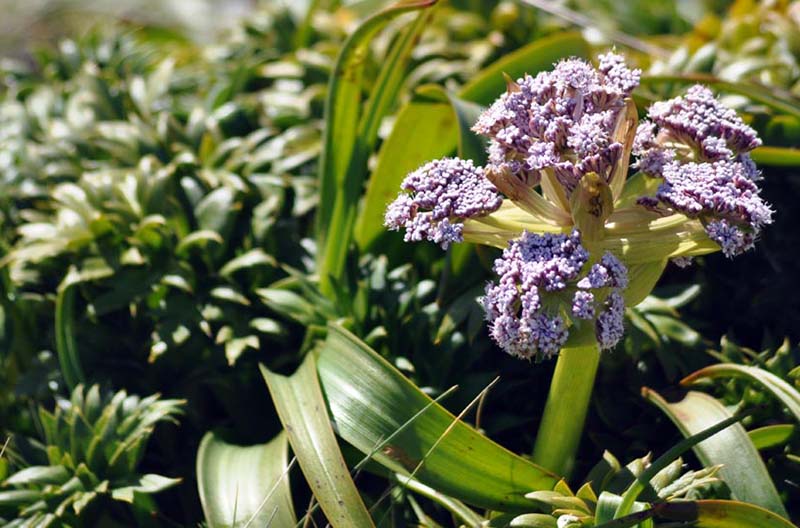 Anisotome latifolia, (Auckland Islands, New Zealand)
Anisotome latifolia, (Auckland Islands, New Zealand)The open grasslands of the tundra allow space for large subantarctic seabirds to breed...
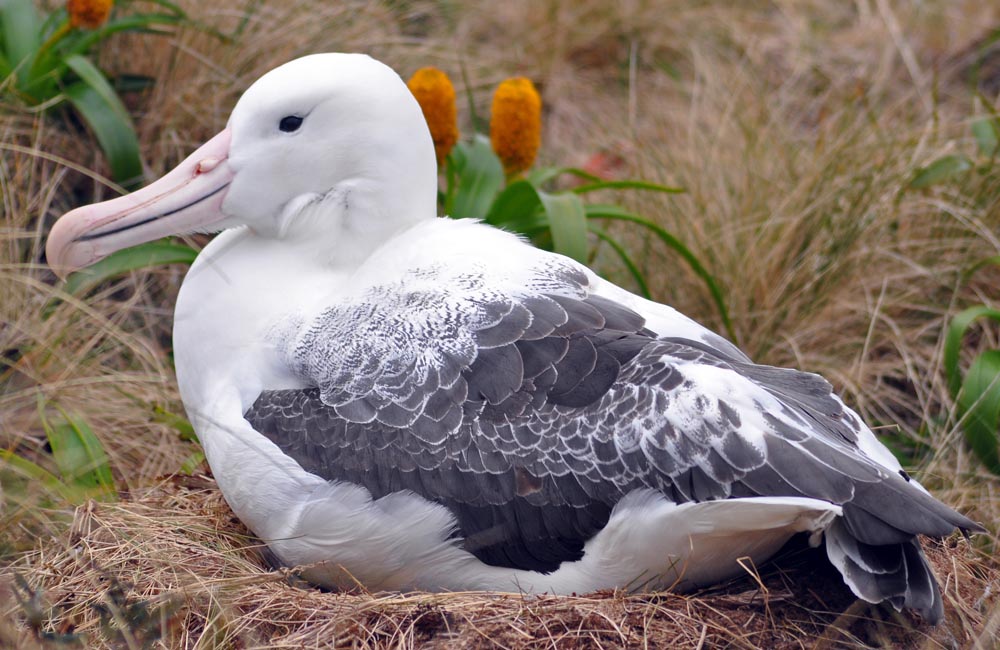 Royal Albatross nesting, (Subantarctic New Zealand)
Royal Albatross nesting, (Subantarctic New Zealand)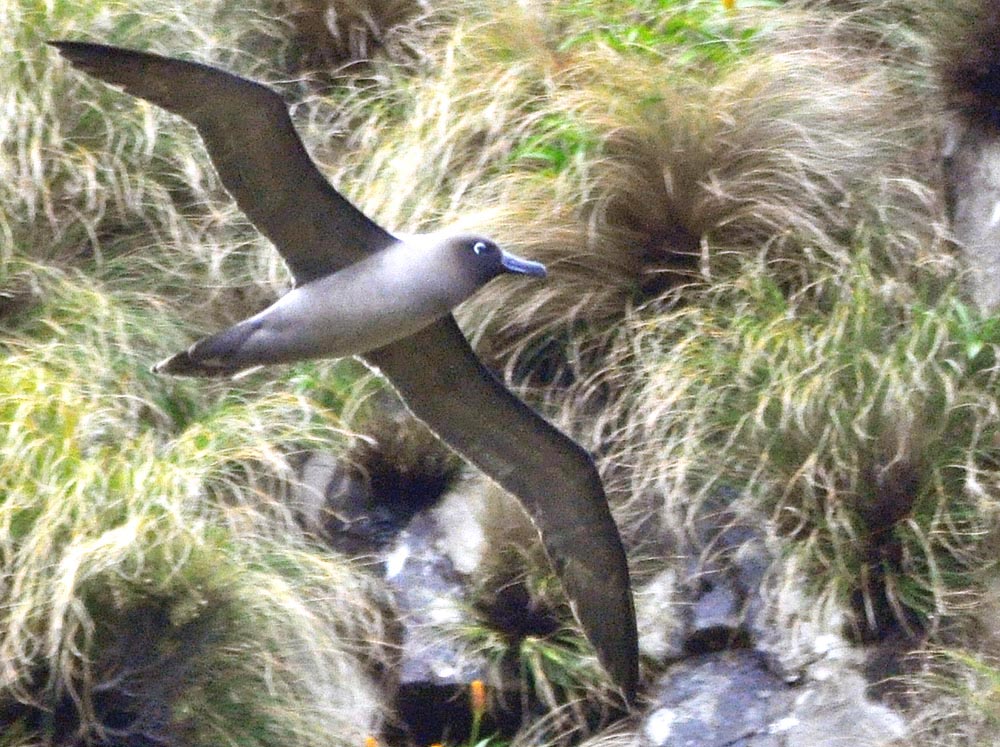 Phoebetria palpebrata, 'Light-mantled Sooty Albatross', (Campbell Island, New Zealand)
Phoebetria palpebrata, 'Light-mantled Sooty Albatross', (Campbell Island, New Zealand)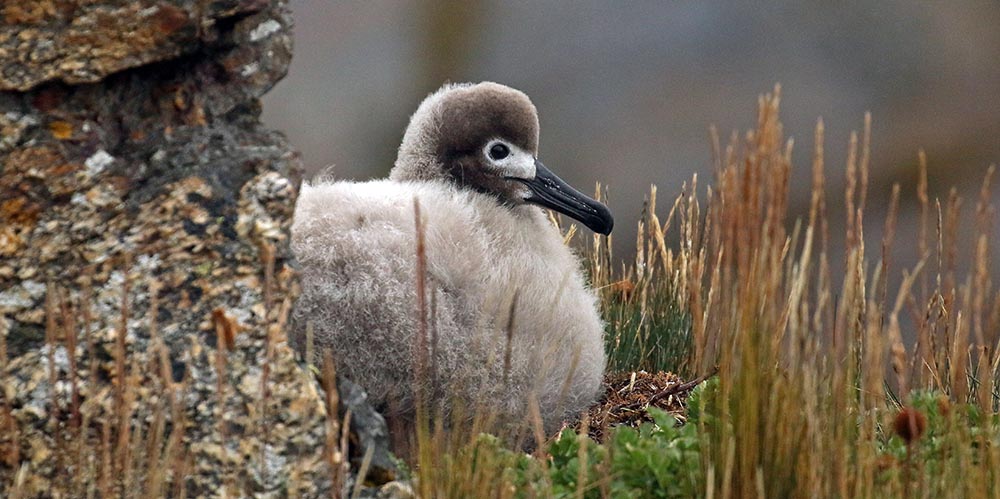 Light-mantled Sooty Albatross, chick at nest, (Fortuna Bay, South Georgia)
Light-mantled Sooty Albatross, chick at nest, (Fortuna Bay, South Georgia)There are a few passerine birds that reach the Falkland/Malvinas from similar open habitats in southern South America...
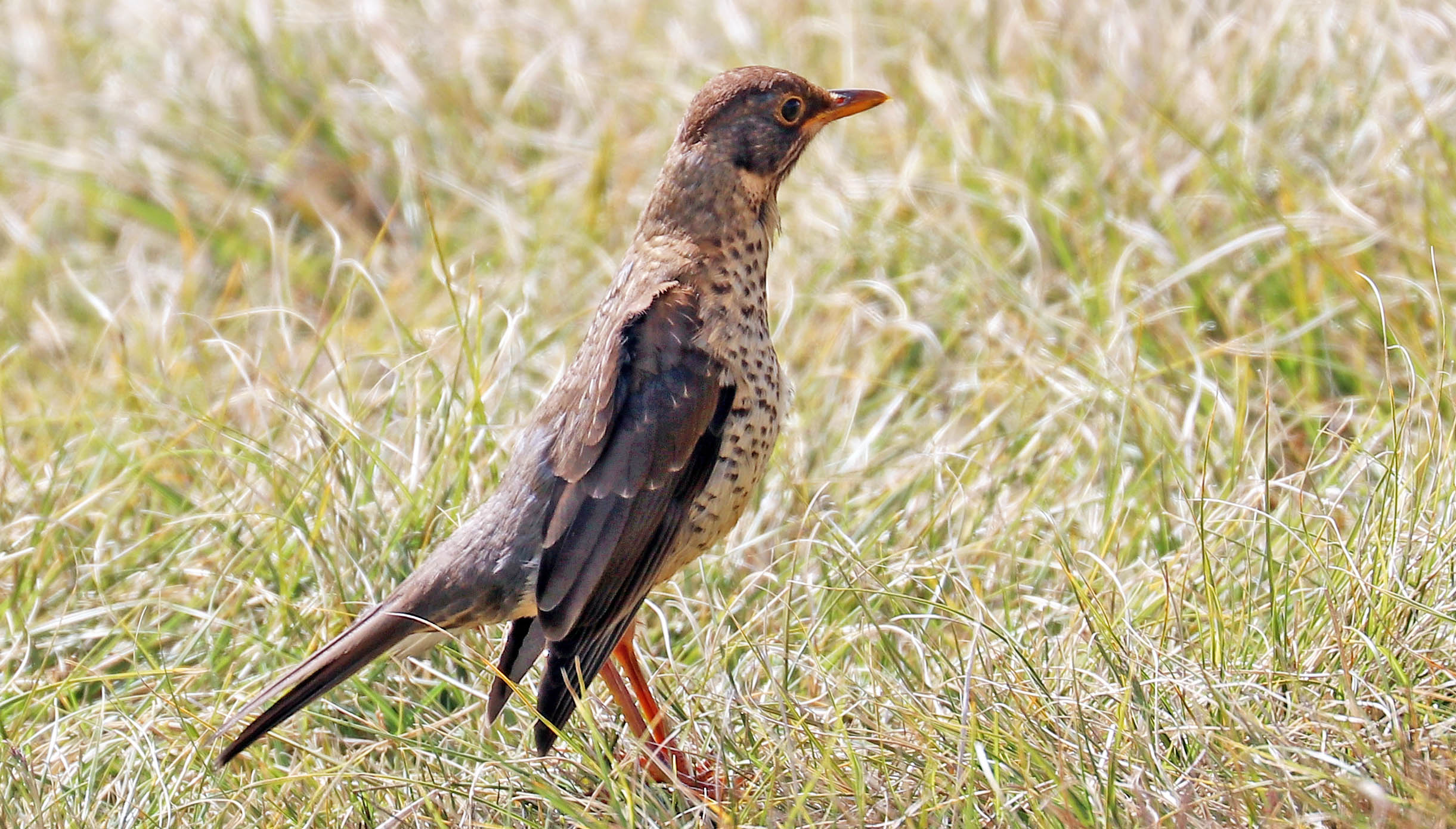 'Falkland Austral Thrush'. The Falklands subspecies of the common thrush of southern South America, (Falkland/Malvinas Islands)
'Falkland Austral Thrush'. The Falklands subspecies of the common thrush of southern South America, (Falkland/Malvinas Islands)Due to the isolation and small size of the subantarctic islands, there are very few native land mammals. There was a native predator on the Falkland Islands called the 'Warrah' or 'Falkland Islands Wolf' Dusicyon australis, that unfortunately was extinct by 1876. In 1834 Charles Darwin observed it and recorded it as a 'wolf-life fox'. More recent arrivals of land mammals on subantarctic islands include non-native reindeer, rats, cats and rabbits. For the marine mammals, please refer to the Subantarctic seashore.
Places of the Subantarctic Tundra
Grytviken on South Georgia. Falkland Islands/Malvinas. Auckland Islands in subantarctic New Zealand.
Other related habitats...
Surrounding this tundra is the Subantarctic seashore and beyond that is the Subantarctic ocean. Further south are the oceans and shores of Antarctica. At the other end of the Earth, the northern equivalents are the Arctic ocean & seashore and the Arctic tundra.
